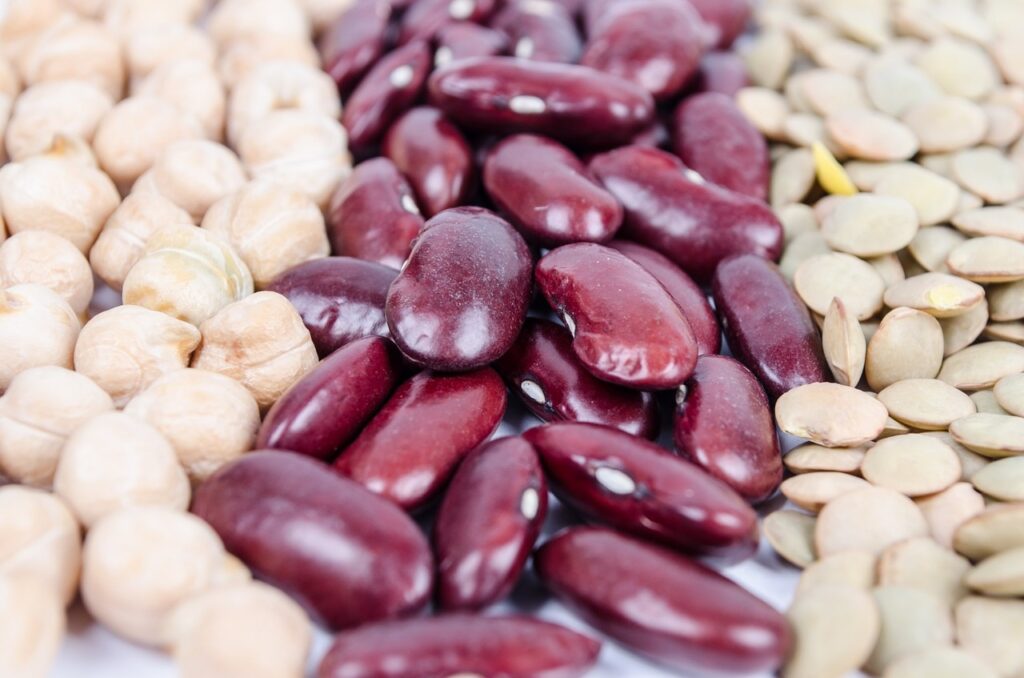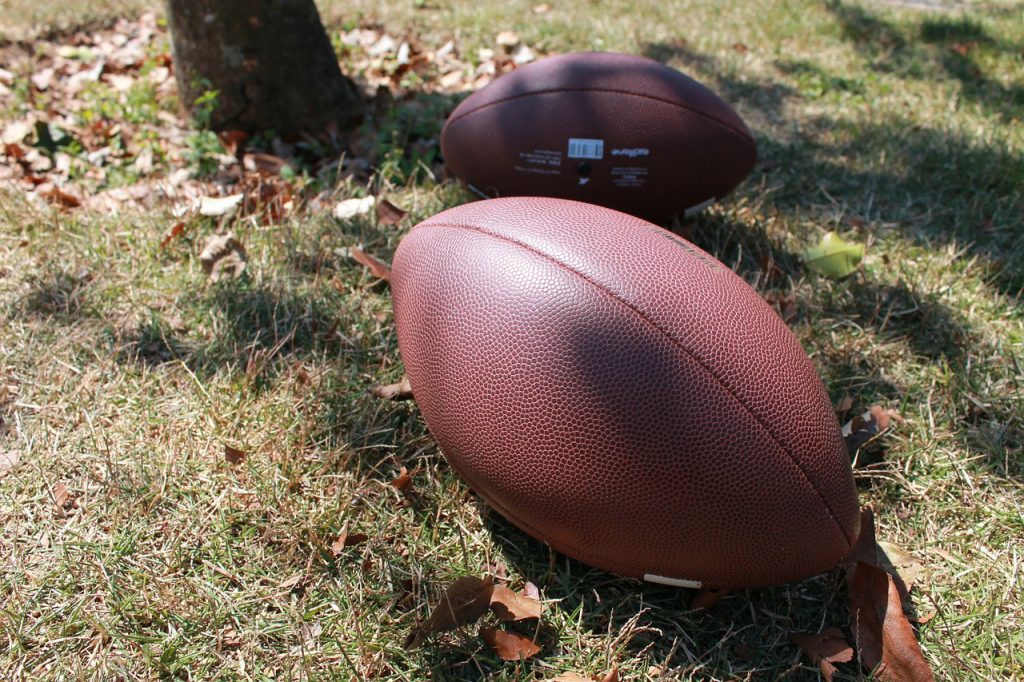Ways to Add Beans to Your Diet

Legumes are types of foods in the protein food group which include lentils, edamame/soybeans, split peas, chickpeas/garbanzo beans, and other beans such as kidney beans, lima beans, red beans, navy beans, black beans, pinto beans, black-eyed peas, cannellini beans, and Great Northern beans. Beans and other legumes are rich in fiber, folate, potassium, iron, magnesium, and are low in fat. Eating more beans and other legumes can help lower blood pressure, improve heart health, and regulate blood sugar levels. They’re inexpensive and can be added to a variety of dishes. Note that while string beans are a nutritious, starchy vegetable, they are not considered legumes like other kinds of beans.
When you buy canned beans, look for low-sodium options. Drain and rinse canned beans before eating or cooking reduce sodium even further.
To prepare dry beans, soak them (for at least 48 hours to reduce gastrointestinal side effects), then drain and rinse beans in cold water. Place soaked beans in a pot, cover with water, and let them come to a boil on the stovetop. After boiling for 10 minutes, reduce heat to low and continue cooking until beans are soft and can be easily mashed (usually around 45 minutes depending on the bean). If you cook beans in a slow cooker, make sure to boil them on the stovetop before finishing cooking in your slow cooker.
Not sure what to do with your beans once they’re ready to eat? Here are a few ways you can eat beans!
Salads: Top your salad with beans for a nutritional boost. You can also make a bean-based salad, like this fiesta salad.
Soups: You can add beans of your choice to any soup, such as chicken noodle soup and potato soup. Also, try bean-based soups like taco soup and chili.
Rice and Beans: Rice and beans is a quick nutritious meal. Brown rice and beans together provide plenty of fiber, and you can add all kinds of vegetables and sauces. For example, you can try rice and beans with salsa, tomatoes, salad greens, onion, and bell pepper.
Hummus/Bean Dip: Hummus (made with chickpeas) pairs well with vegetables and whole grain crackers. Chickpeas aren’t the only bean you can use to make a bean dip–you can also try making bean dips with other types of beans like black beans and kidney beans.
Tacos: Use beans instead of meat for a less expensive taco recipe. If you want to include some meat, you can replace some of the meat with beans. This is a great way to slowly add beans to your diet!
Hidden: Add whole or mashed beans to recipes with ground beef (like meatloaf, meatballs, and hamburgers) and sauces (such as spaghetti sauce) where you may not even realize they’re there.
Eggs: Try Southwest-style eggs with black beans, salsa, onions, bell pepper, and other vegetables. You can also make an egg burrito with beans.
A common complaint about eating beans is the gastrointestinal side effects like bloating and gas. This is completely normal when your body isn’t used to eating beans. Make sure to rinse canned beans very well and cook dry beans until they’re very soft to eliminate as much of the gas-producing carbohydrates as possible. Also, introduce beans into your diet very slowly. Start with just a couple of tablespoons, then gradually add more by the tablespoon as you tolerate small amounts over time. Lastly, you can add spices like cumin and ginger when you’re cooking beans to help with digestion.
How will you try beans this week?
After-School Activity

The first day of school is coming up. With the rush of gathering school supplies, packing lunches, and meeting teachers, it can be easy to lose track of time and forget to include time for children to be active. Start the school year off on the right foot by planning for physical activity!
Some children get physical activity at school during recess, physical education class, and after-school sports, but there are also many ways children can be active at home after school! Try a variety of activities to keep children interested and excited to be active. Find what works for your family and stick with it. Here are some ideas to get you started:
Have a Dance Party: Dancing is a great way for gets to let loose and get their energy out after a long school day! Let children pick music that will get them moving.
Go for a Walk: Walking is great activity for the whole family. You can walk in your neighborhood, on a hiking trail, through the mall, or on an indoor track. If it’s raining, you can march through the house together, letting children take turns as the leader.
Outdoor Games: Being active as a family, you can play team sports and games like basketball, soccer, kickball, baseball, and more! Try games that are easy to play in your yard or in the driveway like four square, tag, and relay races.
Yoga: Children of any age can try different yoga poses. Yoga can be a great way for children to be active while winding down their day. Doing yoga helps build strong muscles and improves flexibility. Do yoga in a room with enough space for everyone to stretch out, or you can try yoga outside.
What activity can you and your children try after school next week?
Fitness Basics for Youth

We know that physical activity is good for us and our children. For children, being active regularly can help improve cardiorespiratory fitness, strengthen bones and muscles, keep them at a healthy weight, reduce anxiety, and reduce the risk of health problems like heart disease, type 2 diabetes, high blood pressure, cancer, and obesity. Whether your children are already active or are just getting started with physical activity, there are some fitness basics to be mindful of.
How much physical activity should youths aim for?
Children and adolescents should try to get at least 60 minutes of physical activity every day. This activity should be moderate to vigorous. Moderate activity includes activities like brisk walking, hiking, dancing, and bicycling less than 10 miles per hour. When doing moderate exercise, you’ll breath faster, but you’re not out of breath; you can talk, but you can’t sing; and you’ll start sweating after about 10 minutes. Vigorous activity includes activities like running, swimming freestyle laps, aerobics, basketball, and bicycling more than 10 miles per hour. When doing vigorous exercise, your breathing is deep and quick, you can’t say more than a few words without taking a breath, and you’ll sweat after just a few minutes. Also, youths should include aerobic activity (e.g. walking, running, swimming, dancing, bicycling), muscle strengthening activities (e.g. gymnastics and push-ups), and bone strengthening activities (e.g. jump rope and running) every week.
Warming Up and Cooling Down
Warming up helps prevent injuries when exercising. A warm up can just be a slower version of the moderate or vigorous activity your child does. For example, if your child is going to run, they can warm up by walking to help get their heart rate up slowly. Breathing will start to be deeper than when you’re at rest, but not as much as moderate or vigorous activity. After activity, have children cool down by stretching or walking slowly for about 5 minutes to let their heart rate come back to normal.
Hydration & Nutrition
Children should drink water before, during, and after exercise. This will help replace the water that children lose by sweating during physical activity. Drinking water is especially important when exercising outside in the heat to prevent heat illness. Also, children should eat a nutritious snack after they exercise, such as whole wheat crackers with peanut butter or low-fat yogurt with fruit.
Remember if your children are getting little to no activity, it’s okay to slowly work their way to 60 minutes of exercise daily. They don’t have to go right from 0 minutes to 60 minutes! Help them find activities they love to make them excited to play everyday! How can you be active with your children?
References
- https://www.cdc.gov/healthyschools/physicalactivity/facts.htm
- https://www.mayoclinic.org/healthy-lifestyle/fitness/in-depth/exercise-intensity/art-20046887
Touch Football

August is here which means football season is upon us. As a family you can play a non-contact game of football that doesn’t involve tackling–either touch football or flag football. These variations make it easier for young children to learn how to play.
Before you play touch or flag football, make sure you have plenty of space to run free of obstacles and other hazards. Between four and nine players per team is a sufficient number, but you can play with fewer or more people, depending on the size of your group. In touch football you tag the opposing team member to end a down and in flag football you remove a flag from the opposing team member to end a down. Touch football may be preferable to flag football if you don’t have flag belts.
Short bursts of intense physical activity when playing touch and flag football are good for heart health and can also help children release their energy. Whether they play on a non-tackle team or casually with friends and family, non-tackle football like touch and flag football can be great forms of activity for children–especially teens.
Kids Eat Right Month
 August is a big month to recognize nutrition for youth health. A healthy diet is important for children and adolescents because it promotes needed growth and development and it prevents health problems later in life. To recognize Kids Eat Right Month, here are some tips for helping your children eat right every day:
August is a big month to recognize nutrition for youth health. A healthy diet is important for children and adolescents because it promotes needed growth and development and it prevents health problems later in life. To recognize Kids Eat Right Month, here are some tips for helping your children eat right every day:
Quick Breakfasts
Most school-aged children are awake for school early in the morning, making it difficult to eat a good breakfast, or even eat breakfast at all. Set your children up for success from the start of their days by giving them nutritious breakfast options. Try to include a fruit or vegetable, whole grain (such as whole wheat toast, cereal, or an English muffin), and source of protein (such as eggs, milk, or yogurt) or unsaturated fat (such as nuts, avocado, and plant-based oils). Here are a few breakfast ideas to get you started:
- Whole wheat toast with a plant-based oil (such as olive oil) and a piece of fruit
- Overnight oats or oatmeal with fruit and nuts
- Hard-boiled egg with a piece of fruit and a whole grain muffin
- Whole grain English muffin with chopped fruit and peanut butter
- Whole grain pancakes (made ahead of time) with chopped fruit and peanut butter
- Whole grain cereal with nonfat or low-fat milk and a piece of fruit
- Nonfat or low-fat yogurt with fruit and nuts
- Omelet with vegetables and a piece of fruit
- Egg burrito with a whole wheat tortilla, black beans, scrambled eggs, and vegetables
- Egg sandwich with a whole grain English muffin, egg, and slice of low-fat cheese
You may think eggs take too long to cook in the morning, but there are ways to make it easier to eat eggs for breakfast. One way is to bake eggs in a muffin tin in advance and refrigerate them until you’re ready to reheat them. Also, you can cook scrambled eggs in the microwave instead of on the stovetop. If you like hard-boiled eggs, you can make a whole batch in advance and refrigerate them. Hard-boiled eggs make a great choice any time of the day!
At-School or Packed Lunches
Whether your child brings a lunch from home or eats school-provided lunch, there are many ways your child can get the nutrition they need to keep them nourished and focused. When packing a lunch, pack it the night before and refrigerate it so the lunchbox is cold when your child leaves for school, saving valuable time in the morning! Also, choose an insulated, soft-sided lunchbox and use frozen ice packs to keep cold foods cold. Use an insulated container like a thermos for hot foods like soup. If possible, have your children refrigerate cold foods once they get to school.
When packing a lunch for your child, try and include foods that don’t need to be microwaved since the school may not provide a microwave to students. Sandwiches are an easy and versatile lunch choice. Use whole wheat sandwich bread, whole wheat pita bread, or a whole wheat tortilla. Try spreads like hummus, mustard, and mashed avocado instead of mayonnaise. Look for low-sodium deli meats and low-fat cheeses. Go for as many vegetables as your child likes, such as tomatoes, greens (lettuce, spinach, arugula, Swiss chard), bell pepper, cucumber, carrots, and onions. For peanut butter and jelly, go “light” on the jelly or use fresh fruit to reduce sugar intake. For “salad” sandwiches like tuna or chicken salad, use low-fat mayonnaise and swap some of the mayonnaise for plain low-fat yogurt. In addition to a sandwich, put other foods in their lunch to get all 5 food groups and keep them full through the afternoon. This might include a piece of fruit, raw vegetables (such as carrots, celery, and broccoli), low-fat or non-fat yogurt, peanut butter, hummus, and whole grain crackers.
When buying lunch at school, children should avoid choosing packaged foods like chips and cookies. Encourage kids to choose grilled or baked protein options over fried, and load up on vegetables and fruits. Also, encourage them to choose drinks like water or milk instead of sugar-sweetened beverages.
After-School Snacks
With hungry children and teens coming home from school, be prepared with nutritious snacks that won’t spoil their dinner. Try a homemade trail mix with whole grain cereal or pretzels, nuts or seeds, and dried fruit. You can also pop your own popcorn (or buy low-fat, low-salt popcorn) and add seasonings and spices instead of salt, such as grated Parmesan cheese, chili powder, and cinnamon. For a cold treat, make a smoothie with low-fat yogurt and frozen fruit. Keep ready-to-eat vegetables like chopped celery and cucumber in the refrigerator that are convenient for children to grab and eat after school. Likewise, keep whole pieces of fruit on hand such as apples, bananas, oranges, and pears. Whole grain crackers with low-sodium deli meat and low-fat cheese are a more nutritious alternative to pre-packaged snack combinations.
Having children participate in preparing food is a great way to encourage them to try the food you make. Fruit salsa can be made in advance and children can help prepare it–and it tastes great with homemade cinnamon crisps!
Family Dinners
Dinnertime is a great time to get kids involved with cooking. As with any meal or snack, have your children play a role in shopping, deciding what to eat, and preparing the food to encourage them to eat the nutritious foods you buy. Preschoolers can help with gathering kitchen tools and ingredients, measuring ingredients, and mixing things together. Show them the recipe along the way to get them acquainted with following a recipe before they learn how to read. Young school-aged children can start learning how to use a plastic knife. Have them help cut softer fruits and vegetables like bananas and mushrooms instead of harder ones like apples and carrots. This is also a good age to have children start setting the dinner table for you. Pre-teens and teens, with enough practice, may be able to cook whole meals on their own, or can at least assist with most steps involved in making dinner.
Eating dinner as a family can help children do better in school, promote high self-esteem, lower risk of obesity, and much more! It’s also a great opportunity to teach children table manners and how to have a conversation without cell phones and other electronics involved. Eating nutritious, satisfying foods is important for your children’s health, but the time spent eating with your family is also a key part of their health, so try and eat together as a family every night.
Remember to set a good example for your children. Model healthy eating, physical activity, and getting enough sleep to encourage them to do the same. You’re their biggest role models–take advantage of this and help them eat right!